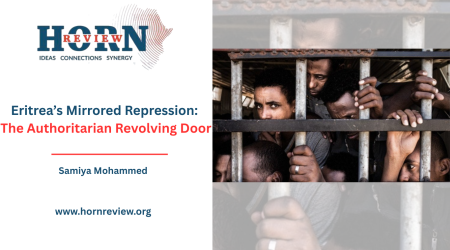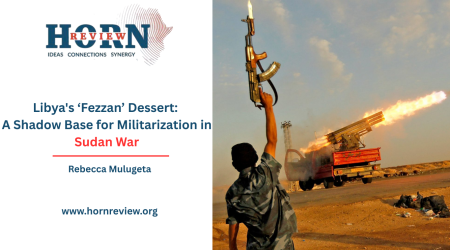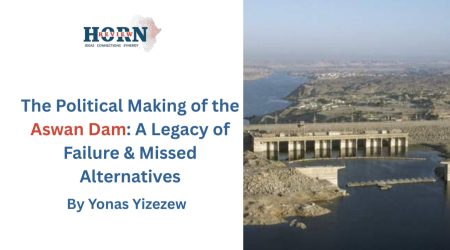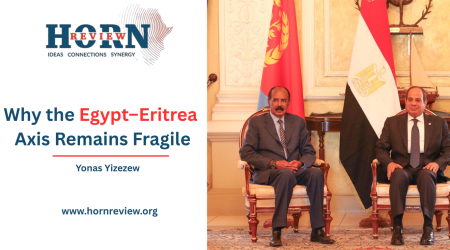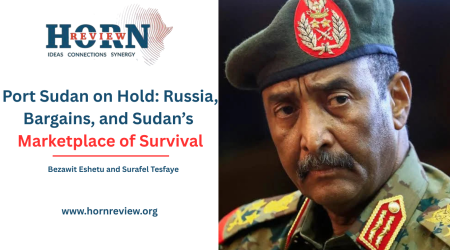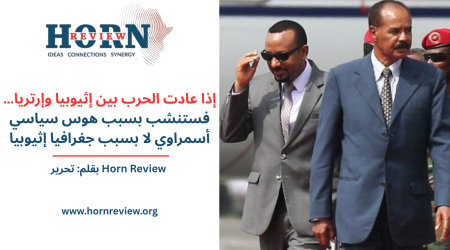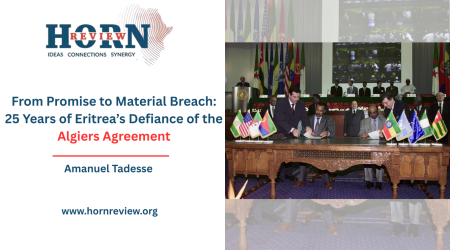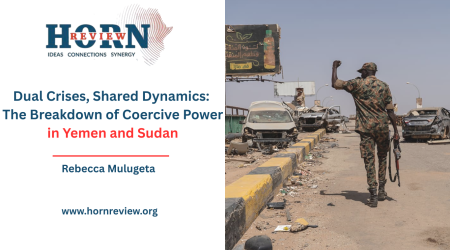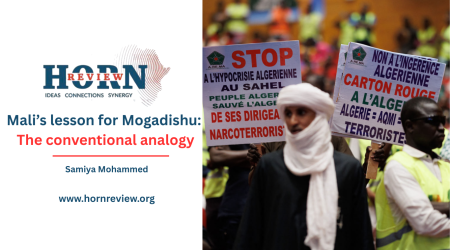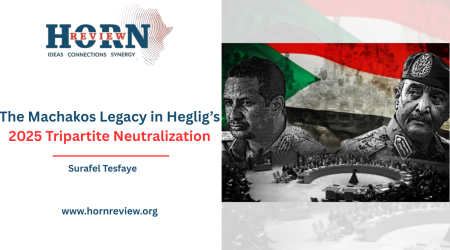
4
Jul
Israel’s Security Doctrine and Enduring Regional Strategy: Lessons for Ethiopia
Since its founding in 1948, Israel has pursued a security doctrine rooted in military strength, intelligence supremacy, and a cold realism in diplomacy. Over decades, it has fought full-scale wars with Arab states, launched preemptive strikes in Lebanon and Gaza, and brokered peace deals with Egypt (1979), Jordan (1994), and the Gulf through the Abraham Accords (2020). Its survival and deterrence are not built on international consensus or moral clarity, but on dominance: hit first, hit hard, then manage the political fallout.
Force precedes diplomacy. Political consequences are calibrated after military operations, not before. And in every major confrontation, Israel ensures it has the political space to act forcefully before global condemnation can take effect.
I. Strategic Doctrine: Surprise, Precision, and Intelligence Integration
Israel’s national security doctrine fuses surprise, precision, and preemption. It is not built on mass mobilization or prolonged engagement. Its model is rooted in speed and clarity of objective: eliminate threats, degrade capacity, and maintain overwhelming escalation dominance.
Operations in Gaza, Syria, Lebanon, and beyond follow a now-familiar pattern. Within hours of provocation or intelligence confirmation, Israel initiates decapitation strikes on Hamas, Hezbollah, and affiliated militant leadership. From the 2008 assassination of Hezbollah’s Imad Mughniyeh in Damascus to the 2020 remote-controlled killing of Iran’s nuclear scientist Mohsen Fakhrizadeh, Israel has shown it can project power without waiting for permission.
Since 2022, this doctrine has deepened, with Israel adopting an increasingly multi-domain approach, blending cyber, electronic, and kinetic methods in tightly integrated operations. In 2023 and 2024, strikes in Gaza and southern Lebanon eliminated senior Hamas and Hezbollah commanders using a mix of SIGINT tracking, drone surveillance, and cyber infiltration. One target in Beirut was neutralized through a booby-trapped smartphone – rigged with spyware and remotely detonated – illustrating Israel’s technological reach and psychological precision.
In early 2025, Israeli airstrikes in Damascus, Sidon, and Tyre killed top Hamas military engineers and IRGC-linked operatives. A Hezbollah strategist was reportedly lured from a fortified compound by a faked voice call and then killed by a drone strike. These operations showcase the maturity of Israel’s fusion warfare doctrine, where cyber deception, electronic warfare, and real-time drone coordination are standard tools – not supplements.
But it was the June 2025 surgical strikes on Iran that marked a doctrinal apex. Years in the making, the operation unfolded over just 72 hours, targeting Tehran, Isfahan, Natanz, and IRGC Aerospace installations. Over a dozen senior nuclear scientists, missile engineers, and IRGC commanders were killed in precision drone and airstrike raids. Simultaneously, Israeli cyber units disabled radar and spoofed GPS systems, blinding Iran’s early warning capabilities.
The strikes were not reactive – they were a culmination of a patient, long-term intelligence and military strategy. Mossad and Unit 8200 had mapped underground sites, penetrated comms channels, and embedded assets well in advance. The operation’s brilliance lay not only in its effect but in its timing: swift, total, deniable.
This reflects a doctrine not of improvisation, but of foresight, integration, and escalation dominance. Israel doesn’t wait for opportunities – it manufactures them, and then shapes the narrative before the first missile is launched.
II. Preemptive Diplomacy: Isolate, Align, and De-legitimize
Force alone is insufficient. Every Israeli military campaign is preceded by preemptive diplomacy – an effort to isolate the target politically, align with allies, and delegitimize opposition. The goal is simple: create space to act, delay backlash, and shape the narrative.
In both the 2021 and 2023 Gaza campaigns, Israel coordinated diplomatic messaging with Washington and Brussels. It framed Hamas’ rocket attacks as terrorism equivalent to 9/11, winning it a window of international legitimacy. Meanwhile, behind closed doors, it briefed regional partners on limited strike objectives to prevent diplomatic overreaction.
By 2025, this method had matured into a system. Before striking Iran, Israel pre-positioned narratives via intelligence leaks to Western outlets, coordinated talking points with allies, and framed the operation as preemptive defense – not aggression. Public diplomacy followed military logic, not the other way around.
At the regional level, normalization efforts via the Abraham Accords further buffered Israel against political isolation. Even during the 2023 Gaza escalation, Gulf states issued symbolic condemnations – but maintained quiet intelligence ties and economic engagement.
And crucially, Israel invests in preemptive strategic communication – not simply to inform, but to manufacture consent. It deploys spokespersons, leaks, and targeted digital influence to shape perceptions. In today’s battlespace, narrative control is not a luxury – it is doctrine.
Normalization and Strategic Outreach
The Abraham Accords were not just diplomatic wins – they were strategic recalibrations. By normalizing relations with the UAE, Bahrain, Morocco, and later Sudan, Israel secured intelligence and economic ties that muted regional pushback during conflict. These pacts turned potential adversaries into cautious bystanders.
Normalization is also a shield. In 2024 and 2025, even amid high-tempo strikes on Hezbollah and Hamas targets, Arab states refrained from escalation. Some even deepened intelligence cooperation quietly. This diplomatic insulation enables Israel to act militarily with reduced strategic cost.
Israel’s outreach isn’t confined to treaties. Its defense exports to Africa, cyber partnerships, and training missions have built a shadow alliance system. From drone sales to Ethiopia to surveillance tech exports across East Africa, Israel is exporting not just hardware – but doctrine.
Outlook: Regional Containment vs. Regime Change
Israel’s long war is with Iran – and its strategy has now fully embraced containment over regime change. While a future without the Islamic Republic remains desirable, Israel knows that creating chaos in Tehran may invite worse alternatives.
Instead, Israel focuses on degradation: a long game of assassinations, sabotage, cyberattacks, and proxy disruption. Whether targeting nuclear physicists, aerospace generals, or IRGC logistics, the goal is to erode capacity while denying Iran escalation dominance.
This strategy is backed by patience, planning, and strategic flexibility. Israel prepares for condemnation – but acts anyway – because it has already shaped the global narrative, realigned its region, and reduced its exposure. Its power does not rest on permanence, but on speed, secrecy, and systemic integration.
III. Ethiopia’s Strategic Takeaways
Ethiopia is poised at a critical moment in its national security evolution. As a regional power with deep historical ties – including a longstanding strategic relationship with Israel – and a growing role in Horn of Africa geopolitics, Ethiopia now has the opportunity to shift from a reactive security posture to a more anticipatory, integrated, and future-ready approach.
Recent advances, including the adoption of drones for intelligence and counter-insurgency, the formation of elite response units in urban centers, and the emergence of cyber defense programs, signal a positive trajectory. These developments offer a foundation for a more cohesive and modern security architecture that reflects both the complexity of Ethiopia’s internal landscape and its regional responsibilities.
Moving forward, Ethiopia can enhance its resilience and effectiveness by advancing a national cybersecurity and defense innovation strategy that not only builds indigenous technical capacity but also embeds cyber doctrine into the broader defense framework. Civil-military intelligence coordination would benefit from institutionalized fusion centers equipped with real-time, interoperable platforms to ensure seamless information flow and joint decision-making across the Ethiopian National Defense Force, National Intelligence and Security Service, and federal police.
Equally essential is the standardization and national integration of local defense forces. By aligning training, doctrine, and oversight across regional militias and special units, Ethiopia can ensure unity of effort, professionalism, and strategic coherence. A significant leap in narrative control and public confidence would come from establishing a centralized and cross-sector Strategic Communications and Psychological Operations Command. This body would unify messaging across security, diplomatic, and civic institutions, enabling Ethiopia to proactively shape both domestic and international narratives, counter disinformation, and maintain societal cohesion during times of tension or conflict.
At the regional level, Ethiopia’s leadership would be strengthened through formalized intelligence-sharing mechanisms with neighbors and IGAD partners, allowing for coordinated responses to shared transnational threats. Complementing these external efforts, legal oversight of security operations at home – especially in ethnically sensitive regions – will be vital to preserving legitimacy and trust in state institutions.
To prepare for emerging and asymmetric threats, Ethiopia should invest in advanced urban warfare and counterterrorism readiness, supported by elite force development and interagency simulation exercises. Finally, establishing a permanent national doctrine and strategic foresight center would institutionalize long-term planning, doctrine review, scenario modeling, and threat anticipation – ensuring that Ethiopia remains adaptive and forward-looking in the face of rapidly evolving security dynamics.
Through this comprehensive and future-focused approach, Ethiopia can transform its security architecture into one that is not only reactive to present risks but also resilient, integrated, and strategically prepared for the challenges of tomorrow.
Conclusion
Israel’s model is not without flaws, nor is it universally transferable. Yet, its core logic – rooted in integration, anticipation, and unapologetic strength – offers valuable lessons. Ethiopia’s challenge is not a lack of will; it is a deficit of structural coherence.
In today’s world, security is defined by preparation, perception, and precision. The question is not whether Ethiopia will face threats, but whether it will confront them with agility, unity, and purpose.
If Ethiopia seeks to shape its regional environment rather than be shaped by it, it must urgently invest in a security architecture that is doctrine-driven, technologically integrated, and politically insulated – just as Israel has methodically done for decades.
By Blen Mamo,Excutive Director,Horn Review

